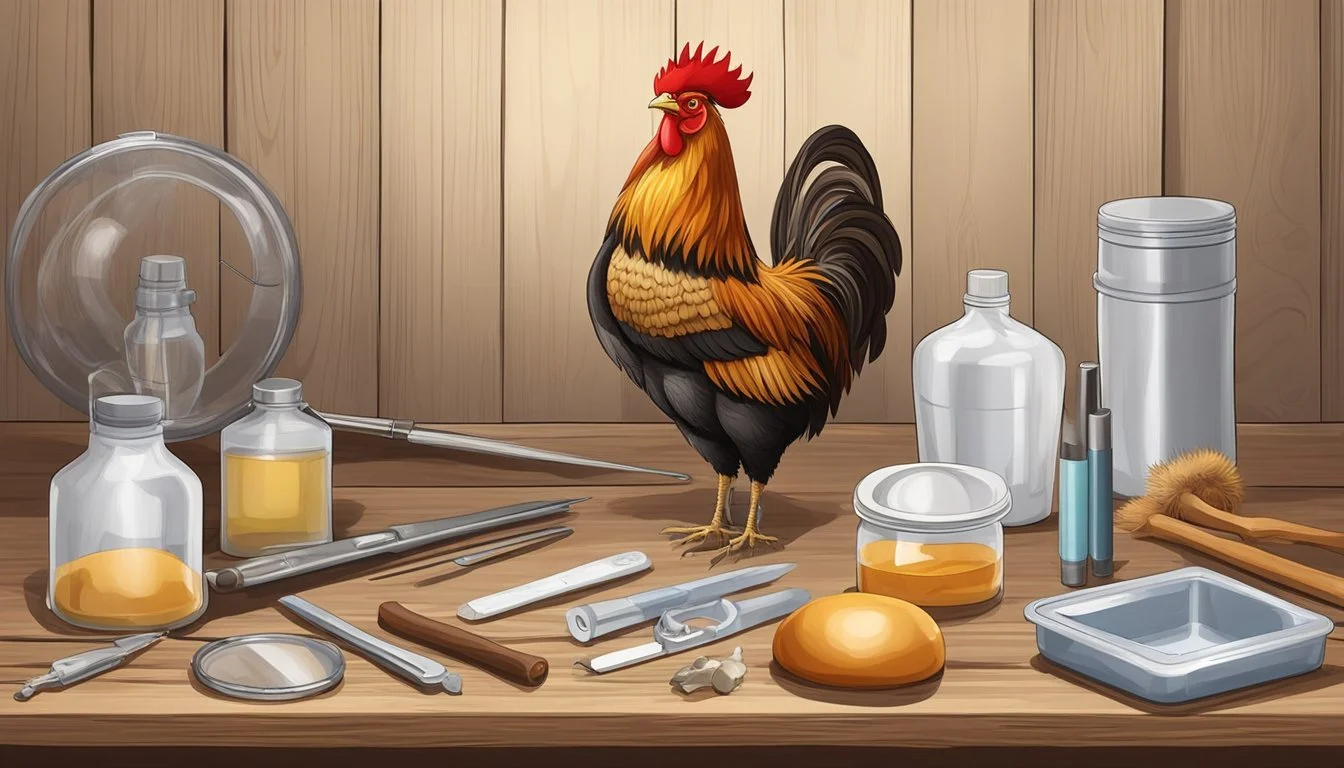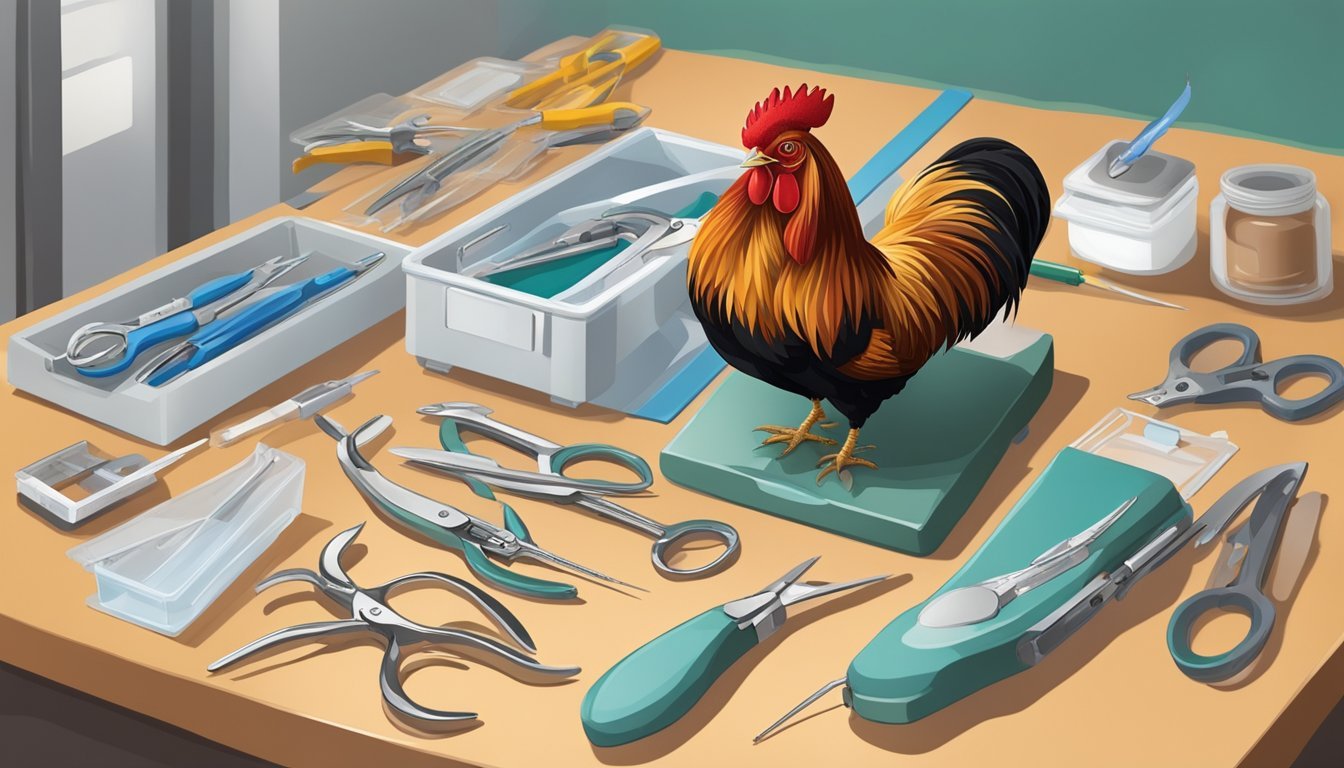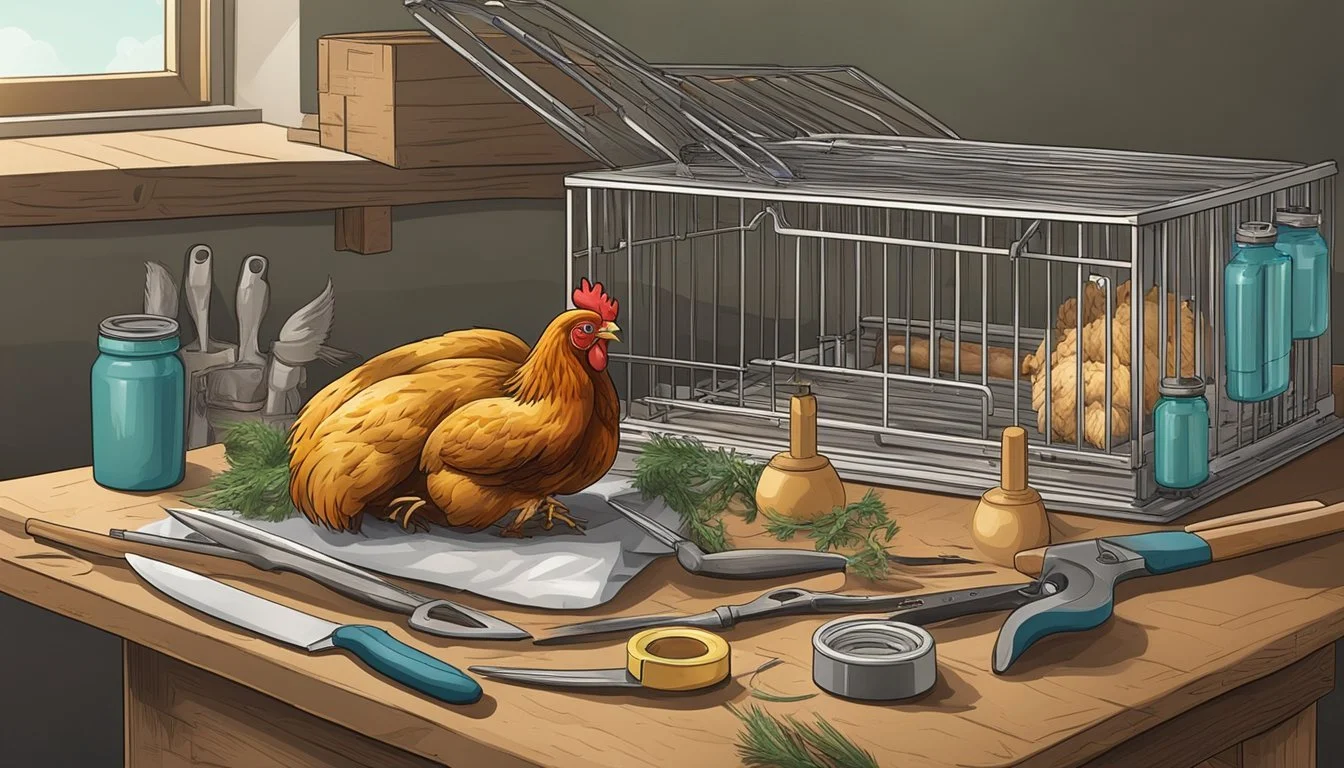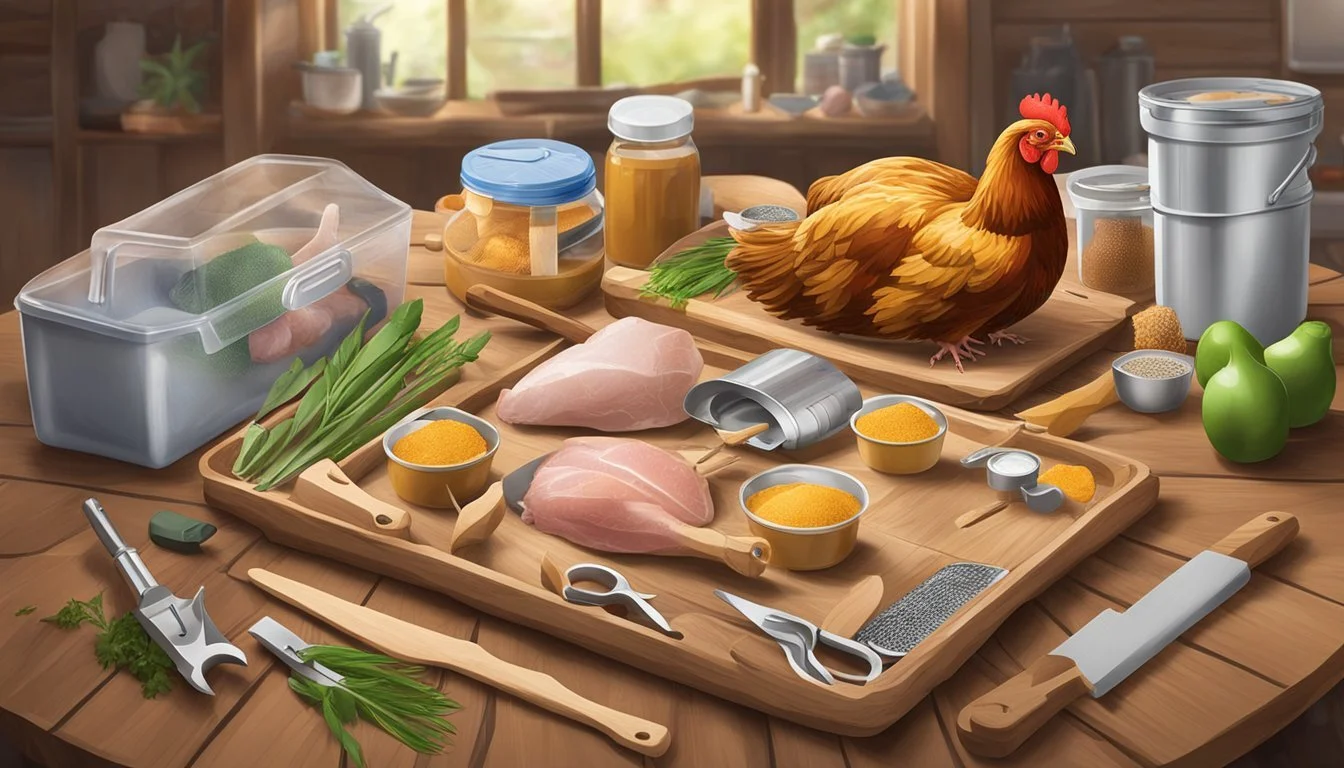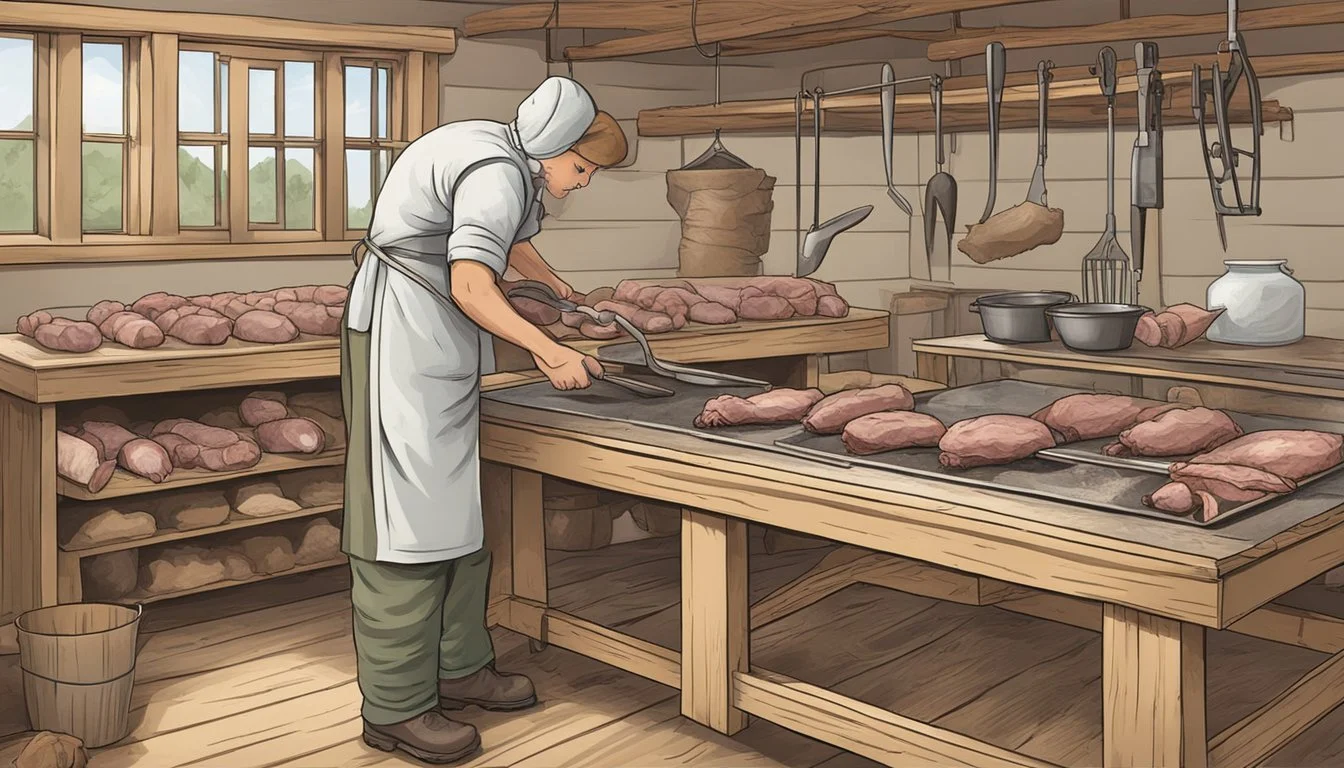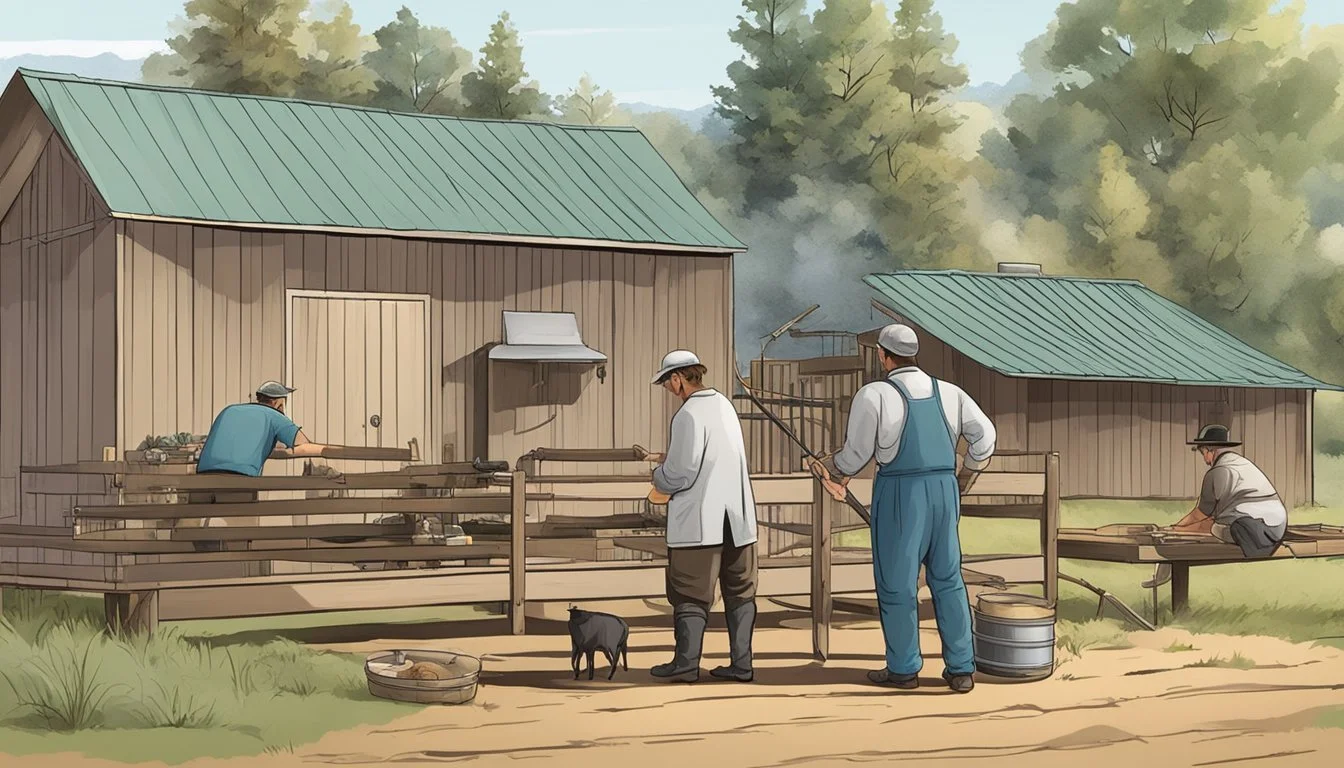How to Use a Caponizing Kit to Enhance Poultry Production on Your Homestead
Caponizing is a traditional procedure practiced by homesteaders seeking to improve the quality of meat produced by their poultry. The process involves the surgical removal of the testicles from a male chicken, which, in turn, leads to a more tender and flavorful meat. This method has been employed for centuries and is lauded for its effectiveness in increasing the size of the bird and enhancing the overall palatability of the meat.
To undertake the process of caponizing, homesteaders use specialized caponizing kits designed for this purpose. These kits typically include the necessary tools such as a scalpel, rib spreader, and forceps. A caponized rooster, known as a capon, is often less aggressive and can be raised longer, resulting in meat that's well-marbled and succulent. Having the right technique and understanding the intricacies of the procedure can lead to significant improvements in meat quality for small-scale farmers and homestead enthusiasts.
Understanding Caponizing
Caponizing is a precise surgical procedure aimed at improving meat quality by neutering male chickens or roosters. It is an ancient practice that, when performed correctly, leads to the production of a capon – a rooster that has had its testes surgically removed.
History and Purpose of Caponizing
Historically, caponizing was developed with the purpose of altering the natural development of roosters. The removal of the testes eliminates the source of male sex hormones, preventing typical rooster behaviors and influencing the growth and quality of the meat.
Benefits of Caponizing for Meat Quality
The meat of caponized chickens is known for its tender texture and rich flavor. As the growth of these birds is slower, the meat texture becomes finer and the fat content is better distributed, which is responsible for the superior quality when compared to regular roosters.
Comparative Analysis: Caponized Chickens vs. Regular Roosters
When comparing caponized chickens to non-caponized roosters, several differences are evident:
Meat Tenderness: Capons have more tender meat.
Flavor: The meat of capons is often described as more flavorful and moist.
Growth Rate: Capons grow more slowly, allowing for increased marbling of the meat.
Ethical Considerations and Animal Welfare
Performing caponization requires careful consideration of animal welfare. It should be done humanely, with proper pain management. The welfare of the bird must be of utmost importance during the procedure to ensure it is as stress-free as possible.
Choosing the Right Breed for Caponizing
Certain breeds are more suitable for caponizing, with dual-purpose breeds such as Orpingtons, Rocks, and Cornish Cross being the most preferred due to their optimum growth and meat quality. Smaller breeds such as Silkies and Bantam chickens are less commonly caponized.
Required Tools for Caponizing
A caponizing kit typically contains several specialized tools to perform the procedure effectively:
Scalpel: For making precise incisions.
Hemostats, Tweezers, and Spreader: To handle tissues and ensure the workspace within the incision is adequate.
A proper sterile environment and proficiency with the tools are imperative to reduce the risk of complications.
Preparation for Caponizing
Proper preparation is essential for a successful caponizing procedure, a process removing a rooster's testes to mitigate aggression and improve meat quality by reducing testosterone levels. This section will guide you through setting up your operation area, preparing the rooster, and maintaining health standards.
Setting Up the Operation Area
An appropriate operation area is well-lit and sterile to prevent infections. Ensure you have a bright light source to accurately visualize the rooster's internal anatomy. Lay out clean towels to create a clean space and to restrain the rooster during the procedure. Gather all necessary tools such as the caponizing kit, cotton balls for absorbing blood, and an antiseptic solution for cleaning.
Selecting and Preparing Your Rooster
Choose a healthy rooster from your local farm, ideally young and not showing any signs of infection. The bird should be fasted overnight to ensure an empty gut, which makes the surgery easier and safer. Restrain the rooster gently to prevent injury to both the bird and the operator. Prepping can also include giving the bird water with electrolytes to ensure hydration.
Health Precautions and Sanitation
Prior to the procedure, clean all the tools with an antiseptic solution and have your hands thoroughly washed and gloved. During and after caponizing, monitor the site for any signs of infection and ensure the bird is kept in a clean, quiet space for recovery. Proper sanitation procedures minimize risks and contribute to the overall success of creating a capon.
The Caponizing Process
Caponization, the act of neutering a cockerel, often results in a bird with tender meat quality due to the halt in male hormone production. This process is intricate and requires precision to prevent harm to the bird.
Step-by-Step Caponizing Procedure
The caponization procedure should ideally be performed when the bird is between 6 to 12 weeks old, depending on the breed and size. Initially, it is necessary to fast the bird, typically for 12-24 hours, to ensure an empty digestive tract.
Restrain the bird securely and sanitize the incision site.
Make a careful incision near the last rib to access the body cavity.
Delicately separate the rib to create an entry point for internal access.
Key Techniques: Making the Incision
A precise incision is crucial for caponization:
Use a sharp knife or the appropriate tool from your caponizing kit.
The incision is made parallel to the spine, usually 2-3 centimeters long.
Locating and Removing the Internal Organs
Once the incision is made:
Gently push aside the intestines to locate the testicles, which are typically found near the backbone.
Avoid cutting any arteries to prevent excessive bleeding.
Closing the Incision and Post-Operative Care
After the testicles are removed:
Clean the incision area.
Use sutures if necessary to close the wound.
Administer any prescribed medication and ensure clean living quarters to prevent infection.
Monitoring for Complications
Regular monitoring for complications is essential:
Check for signs of infection like redness or swelling.
Observe the bird's behavior for any changes indicating distress or pain.
Recovery and Rehabilitation of Capons
The final phase entails recovery and rehabilitation:
Provide nutrient-rich food and clean water laced with vitamins and antioxidants.
Monitor eating patterns and gradual return to normal activities.
Note that a caponized bird will generally show less aggressive behavior and a higher propensity to gain weight, providing a more tender eating bird.
Caring for Your Flock Post-Caponizing
After the process of caponizing, it's essential to focus on the recovery and long-term well-being of caponized roosters, known as capons. The way they are fed, housed, and integrated with the flock plays a critical role in their development into larger, healthier birds with improved meat quality.
Adjustments in Diet and Nutrition
Post-caponization, capons require a diet that supports healing and promotes gradual weight gain. Immediately after surgery, provide:
Electrolyte-infused water to prevent dehydration
Easily digestible feed to help avoid stressing the gut
Within 48 hours, gradually reintroduce a balanced diet that includes:
Higher levels of fat to support their tendency to become fatter and more tender
Vitamin-rich feed to aid in tissue repair and overall health
Housing and Environmental Considerations
Capons need a clean, calm, and stress-free environment to recover properly. For the first few days post-surgery:
Keep capons in a 'hospital cage' with fresh bedding and away from active roosters to prevent crowing that can induce stress
Provide shelter from the elements and predators for optimal recovery
As they heal, ensure that:
The space is kept sanitary to reduce disease and infection risk
Temperature is regulated to prevent overheating, as capons are less able to regulate their body temperature
Integrating Capons with Other Chickens
Successful integration of capons into the existing flock requires careful planning. After they've recovered:
Introduce capons back to the flock during a quiet time to minimize stress
Monitor their interactions with other chickens to ensure that they are not bullied due to their less aggressive behavior
It's important to understand that:
Capons will grow slower and become fatter than other roosters, which can affect social dynamics within the flock
Their docile nature usually leads to fewer disruptions in the backyard homestead setting
By following these guidelines, homesteaders can ensure that their capons thrive, resulting in a high-quality meat yield and a harmonious backyard chicken community.
Advanced Techniques and Alternative Methods
In the realm of poultry management, advanced caponizing techniques and alternative methods are playing a pivotal role in enhancing meat quality and optimizing animal welfare. Exploring both surgical and non-surgical approaches allows homesteaders to apply appropriate methods tailored to specific breeds or conditions.
Non-Surgical Caponizing Alternatives
Chemical Caponization: A non-invasive method involves administering hormones or other chemical agents that effectively neuter the rooster without surgery. This process is overseen by a veterinarian to ensure it is done humanely and legally, as chemical caponization may be subject to local regulations.
Pros: Less stressful for the animals; reduced risk of infection.
Cons: Requires professional oversight; potential hormonal residue in meat.
Restricted Feeding Protocols: Some farmers opt for controlled feeding strategies that limit calories, aiming to mimic the effects of caponization in terms of weight and meat texture. This method is not as effective as surgical or chemical caponization but can be a practical alternative.
Pros: Non-invasive; easily implemented.
Cons: Less consistent results; dietary management is essential.
Heritage Breeds and Specialty Caponizing Practices
Utilization of Caponizing Kits: Specialized kits, such as those from NASCO, come with tools designed for precise incisions and removal of the testes.
Tools: Scalpels, rib spreaders, and lassos are used with precision for heritage breeds like Orpingtons, Rocks, and Silkies.
Adaptations for Breed Size: Smaller breeds, like bantam chickens, necessitate modified caponizing practices due to their size.
Bantam-Specific Tools: Smaller instruments and careful handling are crucial.
Technique: Precision is key as the smaller body cavity leaves little room for error.
Dual-Purpose Breeds: Breeds raised for both meat and egg production, such as Orpingtons, may benefit from tailored caponizing methods that account for their multipurpose use.
Approach: A balance between surgical precision and the maintenance of growth rates is sought.
Aftercare: Post-operative care is imperative to ensure the health and quality of life for these breeds.
Butchering and Processing Capon Meat
When processing capon meat, the focus is on utilizing humane butchering methods, thorough plucking and cleaning, and preparing the meat for superior culinary quality or market sale. Each step is crucial to ensure the meat's flavor and quality are maximized.
Best Practices for Humane Butchering
Humane butchering begins with the proper equipment. Killing cones should be sized appropriately for capons to limit their movement and reduce stress. A sharp knife is essential for a quick and clean cut, targeting the carotid artery and jugular vein. Once bleeding is complete, the next steps can commence, keeping the process as stress-free as possible to maintain meat quality.
Techniques for Plucking and Cleaning
After butchering, capons are typically scalded to ease feather removal. A scalding pot with water between 130-140 degrees Fahrenheit allows for effective feather release without cooking the skin. A plucker can be used to remove the feathers efficiently while taking care not to damage the skin, as this can affect the presentation and quality of the meat.
Buckets should be available for discarded feathers and offal. The capon should then be carefully cleaned, removing any residual feathers, and the internal cavity should be thoroughly emptied and rinsed. Proper sanitation is critical during this stage to prevent contamination and ensure meat quality.
Preparing Capon Meat for Cooking and Sale
Once the capon is cleaned, it's time to prepare the meat for cooking or sale. If selling, it’s important to follow local regulations regarding meat processing and packaging. For cooking, capons can be sectioned with sharp knives into desired portions, such as breasts, thighs, and wings. The superior flavor and quality of the capon meat make it a sought-after product for its tenderness and succulence. Refrigeration or freezing should be done promptly to retain freshness.
By following these steps, one can ensure that the capon meat is processed with a high standard of quality, ready for a premium cooking experience or to command a good price at market.
Legal and Regulatory Considerations
Before undertaking the caponizing of chickens to improve the meat quality on a homestead, it's crucial to be aware of the specific legal frame and regulations that apply, and to understand the implications of compliance with animal welfare standards. This involves familiarizing oneself with local laws, ensuring procedures meet ethical guidelines, and knowing the documentation required for selling capon meat.
Understanding Local Laws and Regulations
Local laws regarding caponizing can vary significantly from one region to another. Some jurisdictions may have outright bans, while others may allow the practice but require that a licensed veterinarian performs the procedure. It's imperative for a homestead owner to:
Check with local agricultural extensions or government bodies about the specific regulations.
Verify if there are any restrictions on who can perform caponizing and under what conditions.
Compliance with Animal Welfare Standards
The process of caponizing, if legally permitted, should always adhere to the highest standards of animal welfare. This means:
The procedure should preferably be carried out by, or under the supervision of, a qualified veterinarian.
Pain relief and anesthetics must be used where required by law or recommended by veterinary guidelines to ensure the process is as cruelty-free as possible.
Documentation and Selling Capon Meat
Selling capon meat fortified by testosterone reduction requires adherence to food safety and labeling regulations. A homestead must maintain proper records and ensure that all products are safe for consumption. They should:
Keep detailed records of each procedure.
Label the meat clearly to inform consumers that the birds have been caponized.
Ensure the meat meets quality standards for selling, which might entail periodic inspections.
Conclusion
Caponizing is a practice often used on homesteads to enhance the quality of poultry meat. When done correctly, caponizing a rooster can lead to meat that is more tender and succulent. It involves the surgical removal of the testes, effectively neutering the bird.
A caponizing kit typically includes various tools such as a scalpel, probe, and forceps. One must handle these instruments with great care to avoid injuring the bird. Moreover, sterilization before the procedure is imperative to prevent infections.
After caponization, the birds require a recovery period in a clean environment with access to water and nourishment. The benefits of this practice become evident as caponized chickens exhibit slower growth, which contributes to the improved texture of the meat.
While caponizing can offer notable advantages for homestead poultry, it is essential for homesteaders to weigh the ethical considerations and legal regulations pertaining to the procedure in their region. Practitioners should always prioritize the welfare of the animals in their care.
In summary, when performed with attentiveness to both animal well-being and procedural guidelines, caponizing using a proper kit can be a valuable technique for homesteaders aiming to produce superior quality poultry meat.

